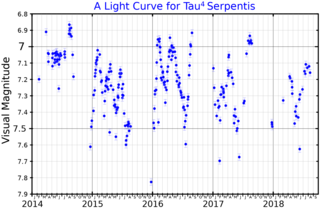
Tau4 Serpentis, Latinized from τ4 Serpentis, is a variable M-type giant star in the constellation of Serpens, approximately 710 light-years from the Earth. Its brightness varies from magnitude 5.89 to 7.07, making it occasionally bright enough to be faintly visible to the naked eye under very good observing conditions.

9 Aurigae is a star system in Auriga (constellation). It has an apparent magnitude of about 5, making it visible to the naked eye in many suburban skies. Parallax estimates made by the Hipparcos spacecraft put it at about 86 light-years from the solar system, although individual Gaia Data Release 3 parallaxes place all three components at 88 light years.

R Andromedae is a Mira-type variable star in the constellation Andromeda. Its spectral class is type S because it shows absorption bands of zirconium monoxide (ZrO) in its spectrum. It was among the stars found by Paul Merrill to show absorption lines of the unstable element technetium, establishing that nucleosynthesis must be occurring in stars. The SH molecule was found for the first time outside earth in the atmosphere of this star. The star is losing mass due to stellar winds at a rate of 1.09×10−6M☉/yr.

V Aquilae is a carbon star and semiregular variable star in the constellation Aquila. It has an apparent magnitude which varies between 6.6 and 8.4 and is located around 400 parsecs (1,300 ly) away.
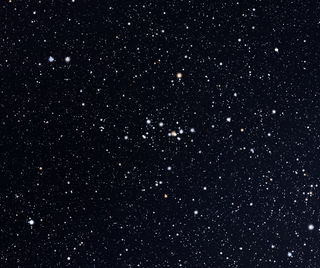
DY Persei is a variable star and carbon star in the Perseus constellation. At maximum it is 11th magnitude and at its faintest it drops to 16th magnitude. DY Persei is the prototype of the very rare DY Persei class of variables that pulsate like red variables but also fade from sight like R Coronae Borealis variables.

NO Apodis is a solitary, red hued variable star located in the southern circumpolar constellation Apus. It has an average apparent magnitude of 5.86, allowing it to be faintly seen with the naked eye. The object is relatively far at a distance of 790 light years but is drifting closer with a heliocentric radial velocity −18.3 km/s.

NO Aurigae is a pulsating variable star in the constellation Auriga. It is an unusually-luminous asymptotic giant branch star about 3,500 light years away. It is a 6th magnitude star faintly visible to the naked eye under very good observing conditions.

TX Piscium is a variable red giant star in the constellation Pisces. It is amongst the reddest naked eye stars, with a significant reddish hue when seen in binoculars. It is approximately 800 light years from Earth. It is close to—and sometimes considered part of—the asterism on the western end of the constellation called the circlet of Pisces.
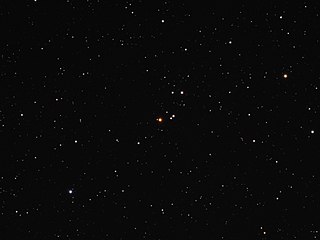
SU Andromedae is a carbon star in the constellation of Andromeda. It is a variable star classified as a slow irregular pulsating supergiant, and varies from an apparent visual magnitude of 8.5 at minimum brightness to a magnitude of 8.0 at maximum brightness with no clear period.

WZ Cassiopeiae is a deep red hued star in the northern constellation of Cassiopeia. It is a variable star with a magnitude that ranges from 6.3 down to 8.8, placing it near the limit of naked eye visibility at peak magnitude. The estimated distance to this star, as determined from its annual parallax shift of 2.1 mas, is about 1,540 light years. It is moving closer to the Earth with a heliocentric radial velocity of −34 km/s.
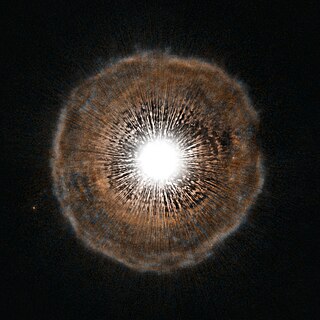
U Camelopardalis is a semiregular variable star in the constellation Camelopardalis. Based on parallax measurements made by the Hipparcos spacecraft, it is located about 3,000 light-years away from the Earth. Its apparent visual magnitude is about 8, which is dim enough that it cannot be seen with the unaided eye.

Delta Coronae Borealis, Latinized from δ Coronae Borealis, is a variable star in the constellation Corona Borealis. Its apparent magnitude varies regularly between apparent magnitude 4.57 and 4.69, and it is around 170 light-years distant.

83 Ursae Majoris is a candidate binary star system in the northern circumpolar constellation of Ursa Major. It is a semiregular variable star, and it has been given the variable star designation IQ Ursae Majoris. It ranges in brightness from apparent visual magnitude 4.69 to 4.75, making it visible to the naked eye under good observing conditions. Percy and Au (1994) identified it as a small amplitude red variable with an irregular behavior, having a characteristic time scale of 20 days. Based upon an annual parallax shift of 5.60 mas, it is located roughly 580 light years from the Sun. The system is moving closer with a heliocentric radial velocity of −18.6 km/s.

Y Centauri or Y Cen is a semiregular variable star in the constellation of Centaurus.

Gliese 908 is a red dwarf star, located in constellation Pisces at 19.3 light-years from Earth. It is a BY Draconis variable star with a variable star designation of BR Piscium. Its apparent magnitude varies between magnitude 8.93 and magnitude 9.03 as a result of starspots and varying chromospheric activity.
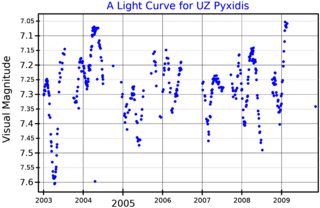
UZ Pyxidis is a semiregular variable star in the constellation Pyxis. It is located about 3,600 light-years away from the Earth.
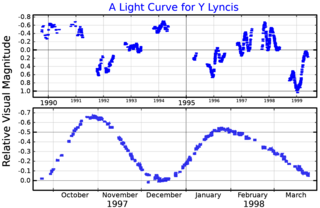
Y Lyncis is a semiregular variable star in the constellation Lynx. It is an asymptotic giant branch star of spectral type M6S, with a luminosity class of Ib, indicating a supergiant luminosity. It is around 1,160 light years away. Y Lyncis ranges in brightness from magnitude 6.2 to 8.9. When it is at its brightest, it very faintly visible to the naked eye under excellent observing conditions.

RW Cygni is a semiregular variable star in the constellation Cygnus, about a degree east of 2nd magnitude γ Cygni. Its apparent magnitude varies between 8.05 and 9.70 and its spectral type between M3 and M4.

6 Geminorum is a variable star in the zodiac constellation of Gemini, located roughly 5,800 light years away from the Sun. It has the variable star designation BU Geminorum; 6 Geminorum is the Flamsteed designation. At its brightest this reddish hued star is barely visible to the naked eye but is readily visible with binoculars, found southeast of M 35, just to the south of WY Geminorum. It is moving further from the Earth with a heliocentric radial velocity of +27 km/s. The star is a member of the Gemini OB1 association.

R Puppis is a variable star in the constellation Puppis. It is a rare yellow hypergiant and a candidate member of the open cluster NGC 2439. It is also an MK spectral standard for the class G2 0-Ia.





















